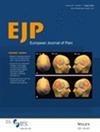Care of newborns hospitalized in the neonatal intensive care unit (NICU) includes multiple painful procedures/day. Epidemiologic studies have reported the frequency and nature of procedures and treatment interventions. However, evidence on the changing trends in the nature and frequency of neonatal pain procedures or treatments over time is absent or inconclusive. We aimed to determine the frequency and nature of painful procedures/neonate/day in the NICU.
MEDLINE and Embase searches were conducted from database inception to July 2023. Studies that reported the nature and frequency of painful procedures and associated pain treatments in neonates were included. Standard inverse-variance random-effects meta-analyses were used to combine studies. Heterogeneity between studies was quantified using the I2 statistic.
Of 2622 unique citations, 64 full-text articles were reviewed; 23 were included. Six additional studies identified in a previous review, and six publications from reference lists were added, resulting in 35 studies. The mean number of painful procedures/neonate/day was 7.38 (95% CI 5.60, 9.17; range <2 to 17). Although the frequency of painful procedures in more recent studies was reduced, it was not statistically significant (p = 0.16). Painful procedures were more frequent during longer observation periods. Needle-related procedures were most common and did not change over time. Procedure-related treatment was suboptimal and inconsistently reported.
Frequency of painful procedures in the NICU has shown a clinically important decrease but has not significantly changed over time. A paradigm shift moving responsibility from providers to systems in changing pain practices in the NICU is required.
The decrease in the daily frequency of painful procedures in hospitalized neonates might be clinically relevant but is not yet statistically significant. Pain treatment is insufficiently documented and reported. This lack of progress in neonatal care might be a result of the complexity of defining pain and stress; inconsistencies in determining the burden of procedural pain; the influence of barriers and facilitators on practice change; and the focus on an individual rather than system responsibility for pain prevention and treatment.


